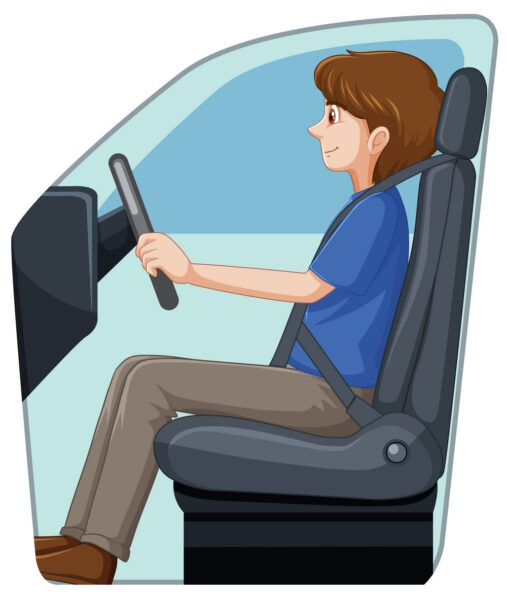Prolonged periods of time spent behind the wheel can lead to back pain and discomfort. There are ways to reduce or minimise the risk of pain while driving.
Causes of back and neck pain caused by driving

- Poor posture: When sitting in a car for extended periods, it is easy to slump forward or lean too far back, putting unnecessary pressure on the spine and surrounding muscles.
- Vibrations from the car: Long hours spent driving on bumpy roads can cause vibrations that travel up through the spine, leading to pain and discomfort.
- Lack of movement: Sitting in one position for an extended period without movement can lead to stiff muscles and joints, which can cause pain.
- Poor seat design: Not all car seats are created equal, and some are poorly designed and lack proper lumbar support.
Prevention strategies
- Adjust your seat: Ensure your car seat is properly adjusted for your height and weight, and consider adding additional lumbar support if needed. A cushion or rolled-up towel can be used to support the lower back.
- Take frequent breaks: Try to take regular breaks every hour or so to get out of the car, stretch your legs and back, and move around to increase circulation.
- Practice good posture: Sit up straight with your back against the seat and your shoulders relaxed, avoiding slouching or leaning too far back. The headrest should not be pushing your head forwards.
- Use cruise control: When appropriate, use cruise control to allow you to move your legs and change position more frequently. The seat squab itself should not be cutting off the circulation to your lower legs.
- Incorporate stretching and exercise: Stretching and regular exercise can help keep the muscles and joints supple and strong, reducing the risk of back pain and stiffness.
- You should be able to reach the steering wheel with your arms slightly bent.
How can you treat back and neck pain caused by driving?
- Rest: If your back or neck pain is caused by a recent injury, it may be helpful to rest and avoid any activities that aggravate the pain. However, it is important to balance rest with gentle movements and stretching to prevent stiffness and promote healing.
- Heat or cold therapy: Applying heat or cold to the affected area can help reduce inflammation and alleviate pain. Heat therapy can be applied using a hot water bottle, heating pad, or warm bath, while cold therapy can be achieved using ice packs or cold compresses.
- Exercise and stretching: Regular exercise and stretching can help prevent and manage back pain by strengthening the muscles, improving flexibility, and promoting proper posture. Low-impact activities such as swimming, yoga, and walking are particularly beneficial.
- Medications: Over-the-counter pain medications can provide short-term relief from back pain. Stronger pain medications may be prescribed by a healthcare provider if necessary.
- Physical therapy: A physical therapist can provide exercises and techniques to help alleviate back pain and improve mobility.
- Chiropractic care: Chiropractors use spinal adjustments, manipulation, and other techniques to relieve back pain and improve spinal alignment.
- Massage therapy: Massage therapy can help relax tense muscles and improve circulation to the affected area.
- Acupuncture: Acupuncture involves the insertion of thin needles into specific points on the body to alleviate pain and promote healing.
Back pain caused by driving is a common issue that can have a significant impact on your quality of life. By practicing good posture, taking frequent breaks, using cruise control when appropriate, and incorporating stretching and exercise into your routine, you can help prevent and manage back pain caused by driving. If you experience persistent or severe pain, seek professional help to determine the underlying cause and find an effective treatment plan.
